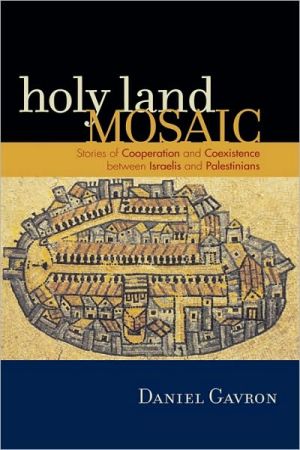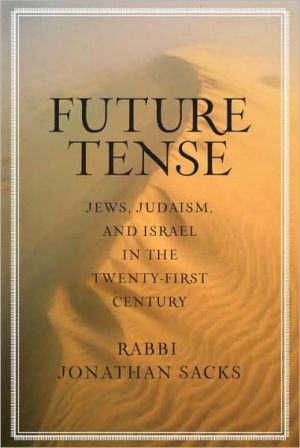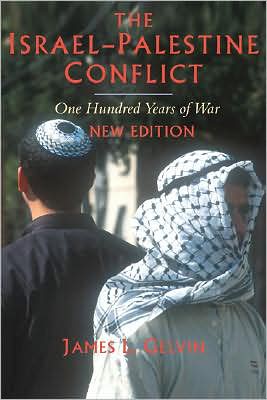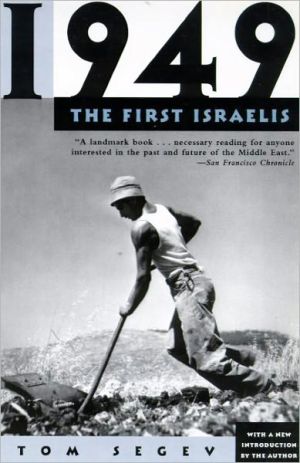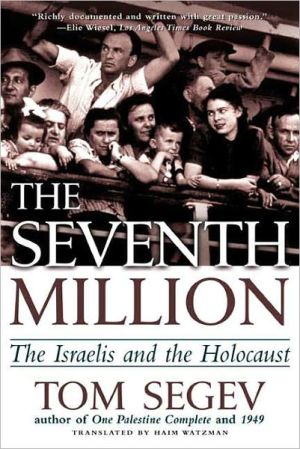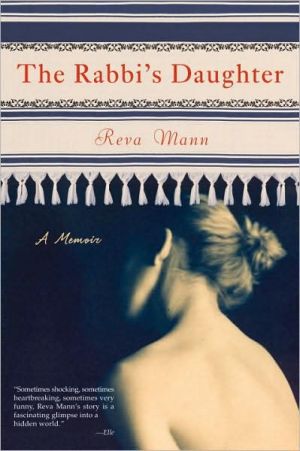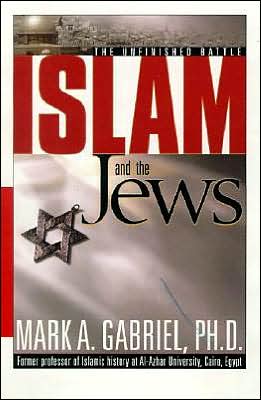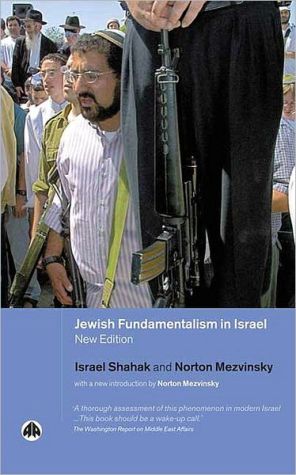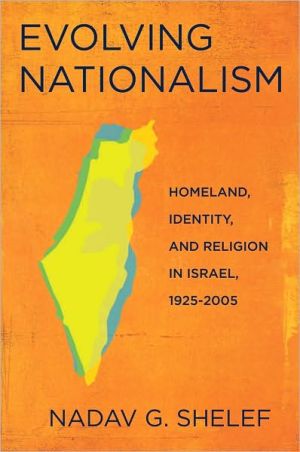Holy Land Mosaic: Stories of Cooperation and Coexistence Between Israelis and Palestinians
The unrelenting conflict between Jews and Arabs in the Middle East is reported daily, but the ongoing dialogue and cooperation between the two is not. Holy Land Mosaic chronicles the less-reported side of the Middle East scene: the ongoing projects of conciliation and coexistence between Israelis and Palestinians, and between Arabs and Jews in Israel. Daniel Gavron presents a personal journey through the different movements, projects, and nongovernmental organizations that promote tolerance...
Search in google:
Holy Land Mosaic chronicles the less reported side of the Middle East scene: the ongoing projects of conciliation and coexistence between Israelis and Palestinians, and between Arabs and Jews in Israel. Daniel Gavron presents a personal journey through the different movements, projects, organizations, and NGOs that promote tolerance and understanding between the two warring peoples.
Holy Land Mosaic Stories of Cooperation and Coexistence between Israelis and Palestinians \ \ By Daniel Gavron ROWMAN & LITTLEFIELD PUBLISHERS, INC. Copyright © 2007 Rowman & Littlefield Publishers, Inc.\ All right reserved.\ ISBN: 978-0-7425-4012-5 \ \ \ \ Chapter One Human Rights in the Shadow of Conflict \ On a recent spring evening, Muhammad Tanji, a twenty-six-year-old Palestinian school counselor, was arrested by Israeli security forces. Tanji, known to his friends as Aziz, was at the end of a long and annoying day spent trying to register for postgraduate studies at al-Kuds University in the eastern part of Jerusalem.\ Aziz lives in the Tulkarm refugee camp in the northern West Bank, a neighborhood of makeshift homes where some twenty thousand people live crammed into less than two hundred acres. On the day of his arrest, he left home at 7:30 a.m., traveling by bus to Ramallah and from there by minibus to Abu Dis just outside Jerusalem. On the way, he and his companions were held up at numerous roadblocks by Israeli soldiers, causing him to arrive at his college just before midday. The 110-kilometer journey should have taken some ninety minutes, but the roadblocks and security checks tripled the time of the trip.\ Aziz was accustomed to this. It had become routine for Palestinians in the West Bank in recent years, but it was not only the Israelis who caused him aggravation. At his Palestinian university, he was shuttled from the registration clerk to the dean of students to the head of the Science Department and later to the grants officer in the Office of Student Affairs. Aziz found himself in a typical catch-22 situation: he could not register at al-Kuds until he had his study grant, and he could not obtain his grant until he had registered. An appeal to the grants officer at Student Affairs failed to solve his problem.\ All this became irrelevant, however, when the Israeli military authorities closed off the Abu Dis area. With soldiers in the streets, troop carriers roaring by, and helicopters clattering around in the skies, Aziz resolved to make for home. The first part of his trip back was "normal." He tried a number of different taxis and minibuses, he was held up at several roadblocks, and he sought alternative ways to reach his destination. At the next roadblock, however, according to his account, the soldiers took his ID card, threw him to the ground, and searched him several times. His briefcase was confiscated and he was handcuffed, blindfolded, and driven to an army camp. There he was set on and beaten by a number of soldiers. Some of the soldiers spoke Hebrew to him, calling him "Azizi" and pretending that they knew him. They told him he had long been a "target" and was "lucky to be alive." They also cursed him as a "son of a whore," adding that he would be "screwed up his ass." Later, a soldier told him he had been on a wanted list for over a year. As his ID had been examined countless times during the past year, and as he had even traveled abroad, Aziz doubted this.\ He was then driven from the army camp to a military prison, where he was examined by a doctor who asked him whether he was suffering from any sickness. He told the doctor that he had an ulcer and inflammation of the urinary tract. He was subsequently questioned for some ninety minutes and asked about his contacts with one "Nidal." He admitted to having met Nidal and other members of his family in connection with plans to establish a cheese-making business in the Tulkarm area, which he hoped would give employment to Palestinian villagers. He further admitted that Nidal had warned him not to act against the Islamic Jihad.\ The Israeli interrogator informed Aziz that he was in possession of secret documents that proved Nidal had asked him to "do something." Aziz replied that the only thing Nidal had asked him to do was to take some goat cheese to a local official in Italy, where he was due on a fund-raising mission.\ The following day, Aziz was questioned by another interrogator, who advised him to admit that he was a member of the Islamic Jihad and that Nidal had ordered him to carry out military operations on behalf of that movement. The interrogator demanded to know why Aziz had traveled to Jerusalem, saying it was obvious that the reasons were "military." When he denied this, he was told he would be examined with a lie detector. Connected to the machine, Aziz was asked whether he possessed a weapon, whether he had ever used the weapon against Israelis, whether he had come to Jerusalem to carry out a military operation for Nidal, and what Nidal had ordered him to do.\ After four hours of questioning, he was informed that he had failed the lie detector test with regard to two questions: his relationship with Nidal and his intention to carry out a military operation in Jerusalem. He was subsequently questioned by several other interrogators, including two women, who made fun of him and told him that he "stank." He was also warned that he would be interrogated until he confessed. During all the interrogations, he was handcuffed and shackled to a chair. His legs were bleeding from the shackles. Altogether, he was questioned for fourteen hours with short breaks.\ At various stages during his interrogations, Aziz says that he was threatened several times that he would be exposed as a "phony peace activist" who was really a terrorist. In fact, Aziz was a genuine peace activist. A former student militant, arrested and imprisoned twice during the Intifada of 1987-1991, he had for the past three years been the Tulkarm coordinator of Windows-Channels for Communication, an Israeli-Palestinian nonprofit association, striving for dialogue and conciliation between the two peoples. He was coeditor of Windows, the association's Hebrew-Arabic journal, written by junior high school students from Israel, Gaza, and the West Bank. When Aziz failed to return, his family turned to Windows for assistance, and his friends in Windows passed on the case to the Moked [Focus] for the Defense of the Individual, an Israeli human rights organization that specializes in assisting individual Palestinians.\ There is often an overlap of membership between the various Israeli-Palestinian groups. Thus Yatom Ben-Hillel, the Moked's website supervisor, is also a Windows volunteer. When he heard about Aziz, he immediately spoke to Orly Barmak, the Moked's coordinator for missing persons, about locating him.\ Orly swiftly went to work, using her contacts in the Israeli police and military. The Moked has these contacts because of the ambivalent relationship it has achieved with the various Israeli military and security authorities controlling life in the Palestinian territories: part adversarial, part cooperative. Starting out on the cooperative route, Orly's first phone call was to the IDF Control Unit, which supplies information on all categories of prisoners: those being held by the army, the police, or the Shin Bet internal security service. The unit had no information about Aziz, so she phoned each of the five Temporary Detention Centers (TCDs) in the West Bank. The Moked has learned from experience that most people detained in the territories are initially held at a TDC, but on this occasion, none of the calls turned up any information about Aziz. Even a special call to the office of the army's coordinator for the territories, often an effective follow-up procedure, failed to achieve results.\ After two days of fruitless activity, a call came through to the Moked's emergency hotline, which operates twelve hours per day in the Jerusalem office to receive distress calls from Palestinians in trouble. The call gave the information that Aziz was being questioned by the Shin Bet security service. Although the IDF was not prepared to say where he was being held, this news at least indicated that Aziz was alive, which afforded his family and friends considerable relief. At the same time, interrogation by the security service was usually bad news for a Palestinian. Orly again contacted the office of the coordinator for the territories, the civilian administration which operates under IDF auspices. The official there confirmed that Aziz was with the Shin Bet, but he also could not disclose his whereabouts.\ Used to searching for alternative channels, Orly placed a direct call to the Shatta jail, where the Prisons' Service has its main computer. There she learned that Aziz was being questioned in the Shin Bet facility at the Kishon jail in Haifa. He had apparently been sent straight there from the IDF's Nablus headquarters. This indicated to the experienced staff of the Moked what Aziz himself had already been told: he was on the wanted list of the security services.\ The Moked's role was over. Once they knew where he was, Aziz's family hired an Israeli Arab attorney, who immediately got to work on the case. The attorney's first move was to enlist the Public Committee against Torture in Israel, which applied to the Supreme Court asking for an order to prevent further mistreatment. The court turned down the appeal, but after a month of imprisonment, during which he was interrogated every day, Aziz was brought before a military court judge who ruled that the classified evidence placed before him by the Shin Bet was inadequate. He ordered Aziz to be released on bail. The bail was paid by an Israeli Jewish friend.\ Why was Aziz arrested, and what did the security services really have on him? Aziz thinks that the Israeli security services collaborate unofficially with the Islamic Jihad, the most extreme Palestinian group in the West Bank. It is in the Israeli interest, he argues, to foster Palestinian extremism, which gives the Israeli authorities an excuse to tighten their control of the Palestinians. They wanted to harass him because, as a popular peace activist, he is the main enemy of the Jihad in the Tulkarm area. "The Jihad is harmful to the Palestinians," he states forthrightly, "that is why the Israelis covertly support it. Tulkarm is the poorest town in the West Bank, which is why the Jihad is so strong here, but I am against them and the people support me."\ There is no doubt that Aziz is a popular figure in the Tulkarm area. A rangy young man with penetrating gray eyes and a thin face framed by a short beard and mustache, he speaks in sharp bursts and punctuates his talk with jokes and anecdotes. He smiles frequently. A stroll with him around the town and the crowded refugee camp shows his close links with all sectors of the population. Every two paces, he is hailed by friends who embrace him and ask him how he is. In the market, he is approached both by people whom he has assisted and by others who would like his help.\ Aziz is currently the local coordinator of Kufia, an Italian NGO that extends modest economic assistance to Palestinians. A stall run by a disabled young man sells cheap Chinese-manufactured shoes. Aziz arranged the Kufia grant that enabled the man to start the modest business, which today supports his family. Another youngster, also bankrolled by Kufia, is selling fruit from a rough wooden platform.\ On our walk, Aziz draws my attention to a constant humming noise. It is made by an Israeli drone (pilotless spy plane), he informs me. Tulkarm is in Area A, which was classified under the Oslo Agreement of 1993 as being under full Palestinian control. The IDF returned to Tulkarm and the other cities in 2002 during the second Intifada, but following some months of comparative calm, the town has been handed back to the Palestinian Authority. Despite the army's withdrawal, suggests Aziz, the ever-present drone sends out a powerful message to the local citizens. A few months back, when the Israeli military was still in control, the noise of a drone was often followed by an attack from an Apache helicopter gunship. The plane identified a wanted Palestinian and the Apache attack followed. Now it is just for general surveillance. It tells Palestinians that the Israelis are watching them and that they can return any time.\ After listening to a long plea for help from a plump woman in traditional galabia robe and kaffiyeh headscarf, we head for lunch at the home of Aziz's brother in the refugee camp. As opposed to the natives of the town of Tulkarm, the inhabitants of the refugee camp used to live in what is now Israel. Aziz's family lived in Tantura by the sea, some twenty miles south of Haifa, and Aziz has researched his ancestral village. He claims there was a massacre there in 1948, a claim vigorously disputed by surviving members of the relevant Israeli military unit who served in that war. His thesis was not accepted by Sweden's Göttingen University, where he studied for a master's degree. He proudly proclaims that he refused to agree to alternative compromise formulations of his work, insisting that the objections were "politically inspired."\ Aziz works voluntarily for both Kufia and Windows. He makes his living as a counselor in several schools, employed by the Education Department of the Palestinian Authority. He finds the children traumatized by the violence, by the tanks in the streets, by the helicopters overhead, by the impotence of their parents whenever Israeli soldiers appear.\ He allows that he himself needs psychological assistance following his recent ordeal, but there is nobody to treat him because all the potential counselors are themselves in need of help. He tells of a summer camp that he organized for Windows two years ago when Israeli soldiers shot the father of one of the participants. His bitterness does not prevent him from continuing to devote time and energy to Kufia and Windows. "Despite everything, we can help our people," he affirms.\ He says that his Israeli Jewish friend Amir Sidi, who paid for his bail, "has helped me more than anyone else." He is aware that Windows did not abandon him in his ordeal, campaigning relentlessly-and eventually successfully-for his release. He recognizes the fact that when he disappeared, an Israeli organization, the Moked, located him, meaning that his family could hire an attorney to work on his case. Without the Moked, he might have remained in prison much longer.\ Aziz was one of nearly five thousand prisoners found by the Moked in a given year, but locating missing persons is only part of its work. Altogether, it assists some nine thousand individual Palestinians annually, dealing with violence, damage to property, confiscation of personal belongings, home demolitions, unification of families, treatment for the sick and injured, prisoners' rights, freedom of movement, and a host of other matters.\ The Moked developed from an initiative of Jerusalem city councilor Lotte Salzberger. The late Dr. Salzberger, a Holocaust survivor and sociology lecturer, was a dedicated campaigner for civil rights. In 1988, acting on behalf of Sovlanut [Tolerance], an advocacy group promoting political moderation and democracy, she asked Yossi Schwartz, a student activist whom she knew personally, to come up with a plan for improving the status of East Jerusalem Arabs to equalize their conditions with those of the Jews of West Jerusalem.\ Schwartz, tall, pale, with steel-rimmed glasses and long black hair parted in the middle, was raised in a religious family with a strong nationalist bent. He grew up accepting his family's principles, but after military service in Lebanon, he changed his views and started participating in demonstrations against the continued occupation of the West Bank and Gaza.\ Following Salzberger's approach, Schwartz went to work, but the outbreak of the first Intifada convinced him that her proposed project was now inadequate. It was the early days of the uprising and in response to the violent Palestinian demonstrations, Yitzhak Rabin, at that time defense minister, had made his infamous remark about "breaking their bones." Instinctively, Schwartz felt that something more radical was required. He visited the student dormitories, recruiting Jewish and Arab volunteers for his new project.\ The Moked for the Defense of Victims of Violence from the Police and the IDF started with a hundred or so volunteers, operating out of a room in the American Colony Hotel on the seam between Jewish and Arab Jerusalem. Over the years, the American Colony has become more than a hotel. As one of the few places where Jews and Arabs meet on equal terms, it is an institution that symbolizes dialogue and conciliation between the communities of the Holy City. It was an appropriate location for launching the new movement.\ (Continues...)\ \ \ \ \ Excerpted from Holy Land Mosaic by Daniel Gavron Copyright © 2007 by Rowman & Littlefield Publishers, Inc.. Excerpted by permission.\ All rights reserved. No part of this excerpt may be reproduced or reprinted without permission in writing from the publisher.\ Excerpts are provided by Dial-A-Book Inc. solely for the personal use of visitors to this web site. \ \
Contents Chronology....................ixPrologue....................xv1 Human Rights in the Shadow of Conflict....................12 Courage to Listen....................153 Refusing to Be Enemies....................254 The Ultimate Symbol of Peace....................355 Learning Together....................476 Living Together....................577 Island of Sanity....................738 An Encounter That Spans the Centuries....................879 Building Blocks of Equality....................10510 Creativity and Recreation....................11911 Donkey Garden of Eden....................13312 Academy for the Environment....................13913 Thinking Together....................14914 Joint Media Initiatives....................15715 The Veterans in the Field....................16516 Religious Faith: Problem or Solution?....................17717 First among Equals....................187Epilogue....................195Selected List of Organizations....................199Selected Bibliography....................201Index....................203
